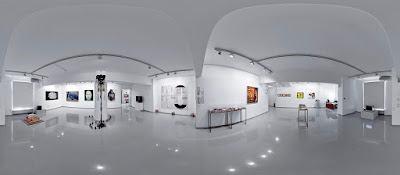From the start, I decided to use the Oculus Rift VR headset as it is smaller, lighter and cheaper than its closest rival, the HTC Vive. Interestingly, HTC have positioned themselves as the number one go-to VR system in the art world. They have ploughed millions of dollars into its supported arts programme and has partnered with the Tate Modern to present the Modigliani experience (https://arts.vive.com/us/2017/10/28/modigliani/?region=emea&locale=uk), Thresholds at Sommerset House (https://arts.vive.com/us/2017/10/26/thresholds/?region=emea&locale=uk) and the From Life project at The Royal Academy of Arts (https://arts.vive.com/us/2017/10/26/from-life/?region=emea&locale=uk). Oculus does not seem to have such a programme at this point. The Vive does have the benefit of being slightly more robust, which is going to help its daily interaction with the general public. Also, the Vive includes a camera that gives it augmented reality possibilities, which is not something that I am interested in for this particular project.
The VR headset is only as good as the computer that powers it. To that end, I have chosen a beast of a laptop to power it; the MSI GT62VR Dominator Pro. Techradar.com only gives it 2.5 stars out of 5 and they describe it as ‘a desktop that wants to be a laptop… that's somewhat easier to carry around than a Mini-ITX computer...powerful at best, and at worst, impractical’. So why have I chosen it?
If the project was to remain static, I would have chosen a (vastly cheaper) desktop, but this is a research project and my focus groups and planned presentations mean that I am going to have to move it around a lot. I do not plan on using it off mains electric so the poor battery life is not an issue and the weighty compactness (and attached monitor) means that I will not have to go through the process of fiddling with a birds nest of wiring everytime I set up or dismantle it. It boasts a Nvidia GeForce GTX 1070 graphics card, a 3.5ghz CPU, 16gb of RAM and 250GB SSD, which is more than powerful enough to drive the Rift without lag or flicker and allow me to develop and build VR gallery spaces in the Unreal Engine 4 app. Perfect.







